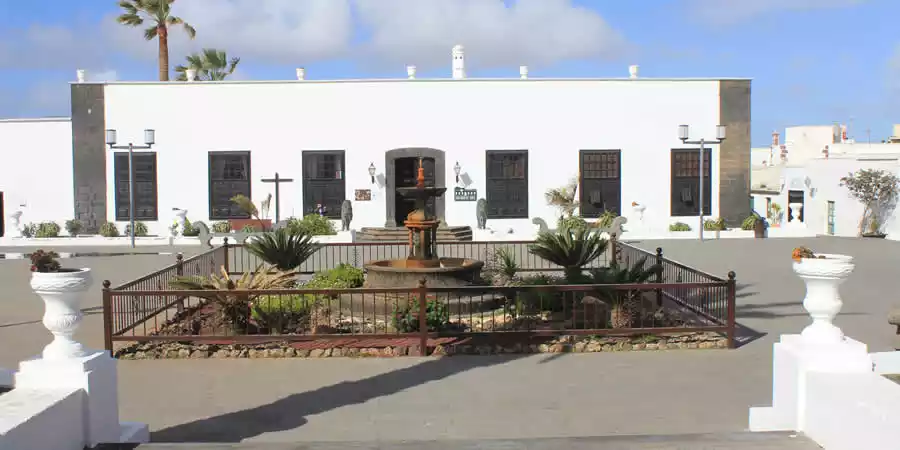
The Spínola Palace is one of the most important houses preserved in the Villa, both for its elements and its dimensions. It is a perfect example of the stately homes that abounded in the Villa, with its spacious halls, patio, well, luxurious furniture, etc.
The Timple House-Museum is a cultural and museum space whose main objective is the dissemination, conservation and study of the traditional culture of the Canary Islands, centered on the timple, one of the most representative instruments of the archipelago.
The museum has a wide collection of timples, including instruments from other countries that show the use of this type of small guitar by various cultures around the world. In addition, the visitor can get closer to the folklore of Teguise and contemplate the different phases of the construction process of the timple, as well as enjoy various audiovisual elements in a heritage environment of great architectural interest.
The Timple House-Museum is not only a place to contemplate and learn about traditional Canarian culture, but it is also a space that promotes the creation and dissemination of new musical works, fostering innovation in the use of the timple and its integration. in other genres and musical styles. In addition, the museum is a study center where research is carried out and the exchange of knowledge about the timple and Canarian culture in general is promoted.
The main entrance is made up of a doorway, with a stone frame, with the characteristic three external steps, through which the only floor of the house is accessed.
Inside, the curtain supports are still preserved, made of carved and painted wood. As an important building, it had its chapel, which in this case, leads to the anteroom. It has a beautiful main patio, closed with windows, in which the curb of the cistern is preserved.
Facing this patio is the spacious dining room, with two built-in stills, which can also be accessed from another smaller patio located in front of the kitchen. The fireplace is tall and beautiful.
From a room that is next to the kitchen, there is access to a second floor that is only on the back of the house, in which the rooms receive light through skylights. Also next to the kitchen is the pantry.
Apart from the main entrance, the house has two other entrances. Through one of them, from an alley, you reach another courtyard, with its cistern, which constituted the service area.
The stately figure of the Spínola house stands facing the square, perfectly framed in the stately setting of the Real Villa de Teguise.
The Spínola Palace was built by Don José Feo Peraza over a period of 50 years, between 1730 and 1780, although his son Don José Feo de Armas was the most important resident of the building. For more than 150 years, the surname Feo was the protagonist of the history of this building until in 1895 the surname Spínola appeared for the first time in its history.
In 1974, the Spínola Palace became the property of the company Unión de Explosivos Río Tinto S.A. and it was restored with the help of the Lanzarote artist César Manrique. Ten years later, in 1984, the Teguise City Council decided to buy the Spínola Palace and turn it into a House Museum. In 1989, the Spínola Palace was declared the Official Residence of the Government of the Canary Islands in Lanzarote.
In 2011, a new remodeling of the building was carried out and it was decided to convert it into the headquarters of the Timple House-Museum, endowing it with cultural and ethno-historical content. The Spinola Palace is now a major tourist attraction on the island of Lanzarote and a symbol of the cultural heritage of the region.